Is the future of maritime remote?
While AI is impacting many elements of our lives, robotics capabilities are also advancing at breakneck speed…
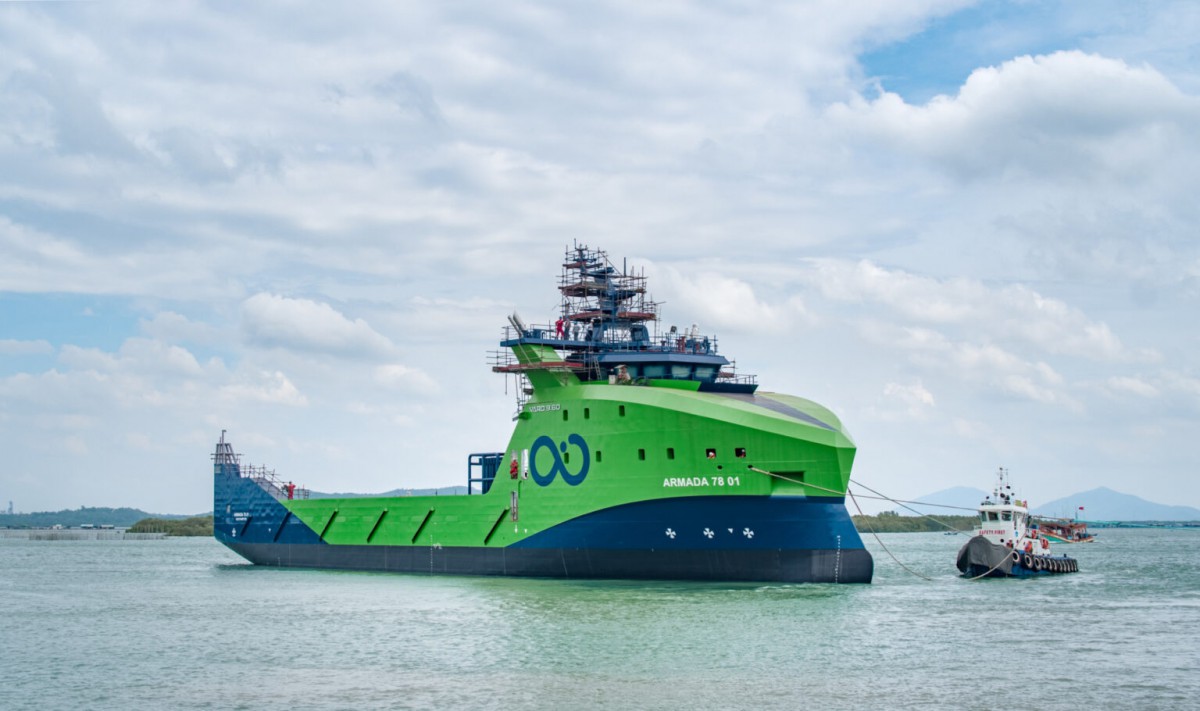
With AI taking over many tasks, robotics is also advancing in capabilities. Ocean Infinity is just one company producing lean-manned or even operating entirely crewless vessels, reaching up to 78 metres, that can be remotely operated. The first vessels of Ocean Infinity’s armada launched last year and represent the rise in robotic boats capable of operating without a crew on board.
As the capabilities of technology to perform real-world tasks such as self-driving cars, writing or even creating art continue to evolve, it’s inevitable that these advancements will also extend to the maritime world.
Operating in Norway are the first few vessels of Ocean Infinity’s ‘armada’, the first of which launched last year. The armada utilises robotics and other technologies to create lean-manned and crewless vessels that can be remotely operated. The Ocean Infinity Armada Fleet will comprise more than 30 vessels in six classes ranging from 8 to 86 metres in length, designed to reduce offshore exposure and vessel emissions through the use of robotic technologies and remote operation.
The largest vessels Ocean Infinity has built and operated so far are six 78-metre vessels, designed to conduct geophysical surveys, geotechnical sampling and inspection, maintenance and repair services. The vessel’s operation will also involve the launch and recovery of smaller autonomous underwater vehicles (AUVs) that can be launched from the aft deck due to a removable bulwark, and remotely operated vehicles (ROVs), which can be deployed from the two moonpools. These moonpools are fitted with a modular Launch and Recovery System (LARS) that is fully automated and remotely operable from Ocean Infinity’s RCC network.
Unlike a typical vessel with 40 to 50 crew on board, these armada vessels instead have just 16. Mainly for those activities that still require the human element of knowledge, eyes and hands that are harder to replicate with automated equipment. This lean manning is achieved through a wide array of cameras, sensors, cabling and other information systems on board, which means many operations can be automated without the need for crew. These systems allow for the remote-control centre (RCC) to effectively mirror the bridge of the vessel, and with the same controls available, be able to remotely control different aspects on board the vessel. These bridge stations are visually immersive due to all the different camera angles and control panels available, which can be used for activities such as watchkeeping and ROV launch and control.
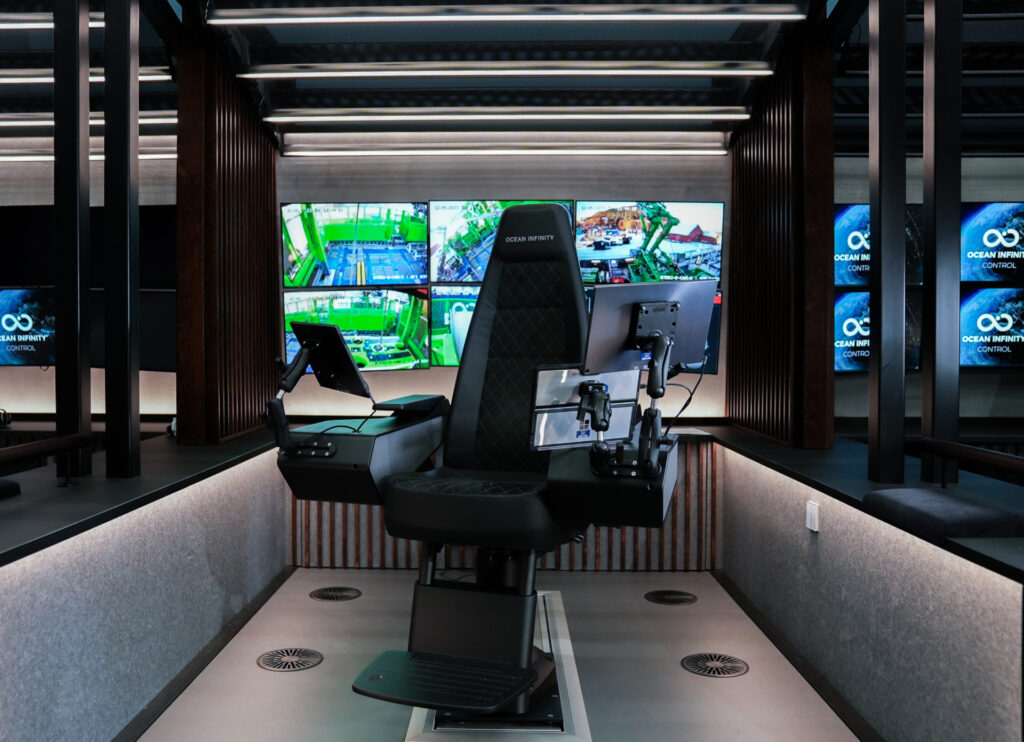
The hope is that various benefits can be achieved through operating with fewer crews. The reduced number of crew members, reduced fuel consumption from less energy demand associated with crew, and more efficient operation will contribute to cost reductions in operating these vessels. This reduced fuel consumption is part of the environmental impact improvement aimed to be achieved, although Ocean Infinity aims to advance this even further in the future as their diesel-electric power systems have been confirmed to be renewable ammonia ready.
The reduced number of crew will also mean more space on board for other purposes. Another element hoped to be improved with these vessels is safety. A 2021 study shows that despite a downward trend, “The total percentage of accidents attributable to human error, adding up the errors of crews plus those not attributable to the crew, is 75 per cent (82.3 per cent in the case of cargo/passenger ships).” So it is hoped that making more systems automated and having more monitoring systems on board will reduce the number of errors and thus fewer accidents will occur.
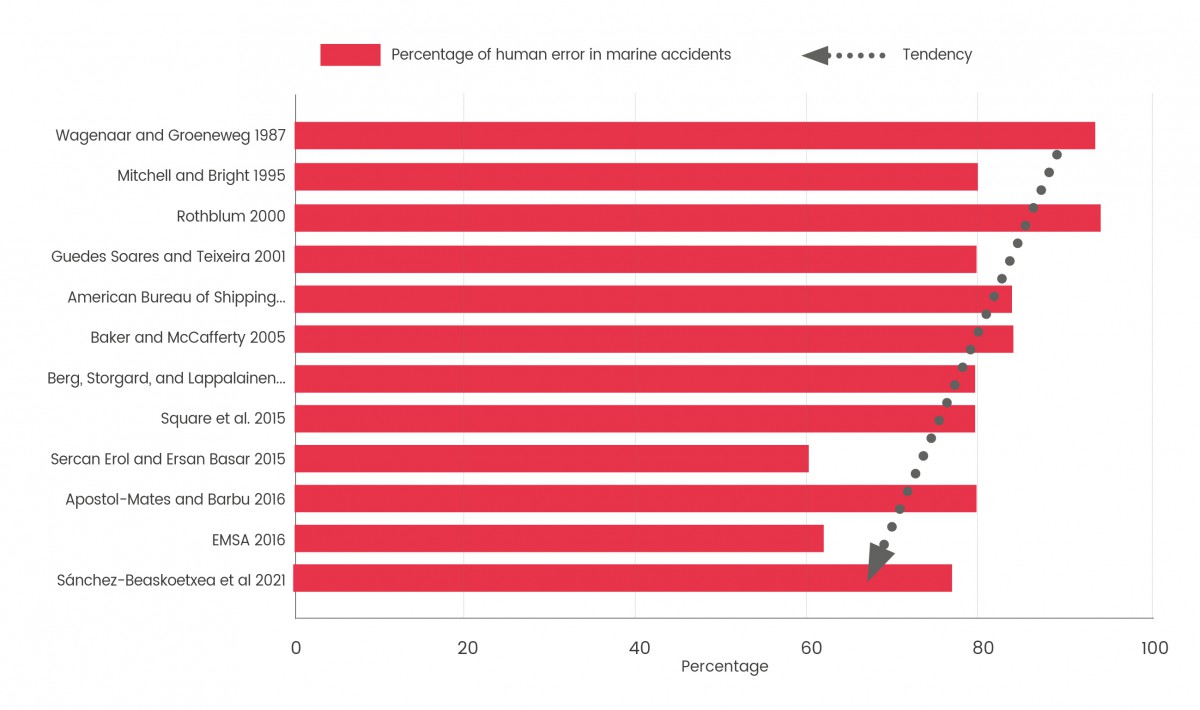 Source: Human error in marine accidents: Is the crew normally to blame? Maritime Transport Research, Volume 2, 2021,
Source: Human error in marine accidents: Is the crew normally to blame? Maritime Transport Research, Volume 2, 2021,
The future Ocean Infinity sees involves even further levels of remote control, as the armada vessels are equipped to become entirely crewless, with a goal being to have one master mariner operating multiple vessels from an RCC. Other countries are developing autonomous container ships, such as in Norway, where an 80-metre fully electric container ship is transitioning to fully autonomous sailing. This is already achieved in China where it’s reported that independent route planning, intelligent collision avoidance and remote-control operations allow it to operate in three different modes: manned driving, remote driving and unmanned driving.
However, this future is likely to be delayed due to regulations surrounding the minimum safe manning of ships, which require a certain number of crew on board to operate. The IMO initiated a regulatory scoping exercise for the use of Maritime Autonomous Surface Ships (MASS) in 2017, to investigate the regulation requirements for these vessels. The result of this is a roadmap to develop a non-mandatory goal-based MASS Code, which is set to be adopted in the latter half of this year, with the potential progression to a mandatory code coming into force on 1 January 2028.
So, while this technology is accelerating quickly within the offshore sector, the question remains as to where else this technology will be utilised. As these technologies develop and become more commonplace, it’s almost inevitable that their influence will extend to superyachting and other areas of the wider maritime industry, probably in ways we can't even imagine as yet, although some use cases, such as remote or automated tenders or the superyachts themselves, can be envisioned.
However, superyacht operations are often very variable, tied to the changeable whim of owners and guests, so could full automation be able to deal with the highly chaotic nature this breed and provide the desired experience? While remote operation instead could counteract this, it won't have that same personable experience between crew and guests. Some on board may also not want the many cameras on board needed to facilitate these technologies. So it's likely if this technology does get implemented within the industry, it will only be for a certain type of owner.
It’s clear that superyachts could benefit from some of the advantages of remote operation. Reduced crew space needed on board opens up more internal space for owner and guest spaces, and cost reductions will always be attractive to many owners. However, given how slow the industry can be with change, along with the regulatory hurdles yet to be overcome, it is likely to be a while yet before we see these technologies being utilised as extensively as they are in other maritime applications as discussed here.
NEW: Sign up for SuperyachtNewsweek!
Get the latest weekly news, in-depth reports, intelligence, and strategic insights, delivered directly from The Superyacht Group's editors and market analysts.
Stay at the forefront of the superyacht industry with SuperyachtNewsweek
Click here to become part of The Superyacht Group community, and join us in our mission to make this industry accessible to all, and prosperous for the long-term. We are offering access to the superyacht industry’s most comprehensive and longstanding archive of business-critical information, as well as a comprehensive, real-time superyacht fleet database, for just £10 per month, because we are One Industry with One Mission. Sign up here.
Related news
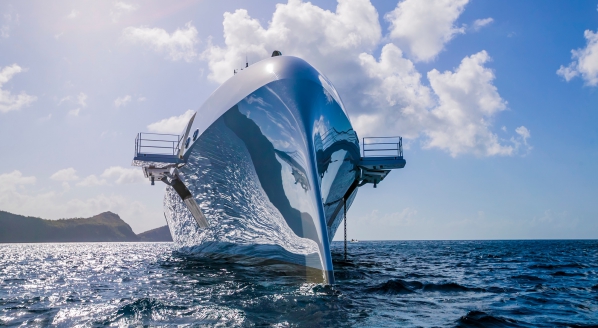
Berkeley Rand: a disruptive approach to superyacht expeditions
Immersive technologies and artificial intelligence will be the focus of the experiences designed by the company
Owner
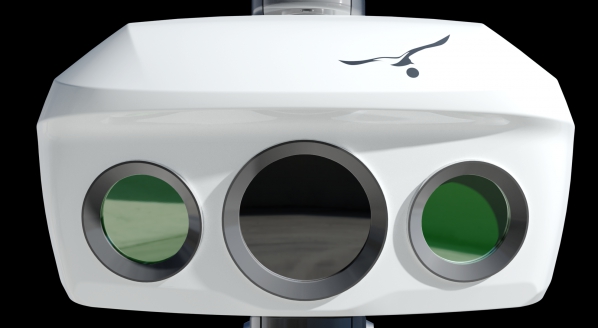
Collision avoidance by artificial intelligence
OSCAR uses thermal and colour cameras and artificial intelligence to prevent collisions with objects at sea
Technology

Integrating artificial intelligence on board
The integration of new technology will keep systems up to date with the needs of the crew using them
Technology

Optimising on-board systems with artificial intelligence
A panel at TSF discussed how AI and ML technologies will transform the way that superyachts are operated
Technology

How can artificial intelligence improve the superyacht industry?
A discussion on how the technology fits into superyacht design, building and operations will take place at TSF 2019
Technology
Related news
Collision avoidance by artificial intelligence
5 years ago
Integrating artificial intelligence on board
5 years ago
NEW: Sign up for
SuperyachtNewsweek!
Get the latest weekly news, in-depth reports, intelligence, and strategic insights, delivered directly from The Superyacht Group's editors and market analysts.
Stay at the forefront of the superyacht industry with SuperyachtNewsweek



